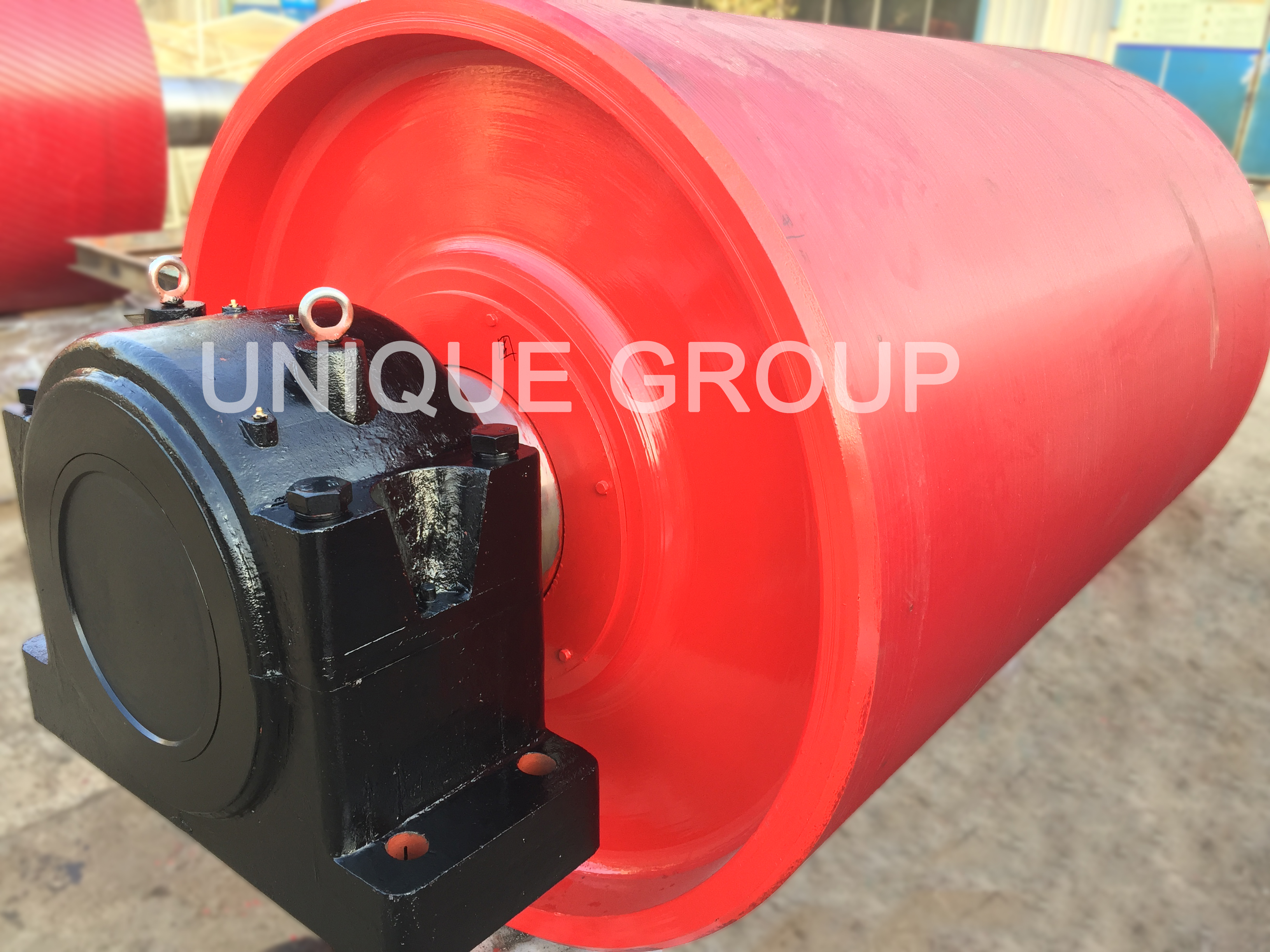| Electric Drum Drive |
External/Internal design; motor power transmitted to drum via internal reducer. |
1. Excellent sealing for dusty environments.
2. Simple installation. |
1. Difficult maintenance.
2. Unsuitable above 40°C.
3. Requires up-sizing. |
1.5kW–30kW |
Mining, grain processing (high-dust areas). |
| K-Series Hollow Shaft |
Hollow output shaft sleeved onto drum; direct motor-reducer connection. |
1. Good sealing for dust protection.
2. Space-saving; widely used in Europe/America. |
Limited power capacity. |
1.5kW–4.5kW |
Compact medium-small conveying scenes. |
| Cycloidal Pinwheel |
Chain-driven via sprockets on reducer and drum. |
1. Simple structure.
2. Easy component replacement.
3. Low cost. |
1. Unsuitable for high dust.
2. Chain life affected by installation. |
1.5kW–22kW |
Low-cost, low-dust scenarios (e.g., small warehouses). |
| DCY Hard Tooth Surface |
Multi-stage coupling transmission for high power. |
1. High reliability.
2. Suitable for heavy-duty applications. |
High cost; large space requirement. |
55kW–355kW |
Large mines, ports (high-power conveying). |
| Suspended V-Belt Drive |
V-belt transmission for smooth operation. |
Smooth drive; minimal impact on components. |
Higher reducer cost. |
Medium power (varies by equipment) |
Scenes requiring stable transmission (e.g., precision materials). |
